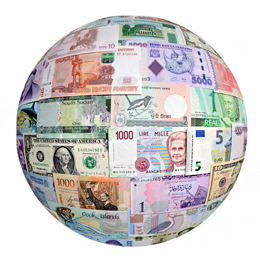 This week, I'm at Commonwealth’s Chairman’s Retreat in Miami, a place that quickly reminds you that the world is much bigger than the U.S. As it happens, my talk here will focus on the rest of the world—and how, exactly, the U.S. fits into it.
This week, I'm at Commonwealth’s Chairman’s Retreat in Miami, a place that quickly reminds you that the world is much bigger than the U.S. As it happens, my talk here will focus on the rest of the world—and how, exactly, the U.S. fits into it.
Why I'm putting the U.S. on the back burner
As an analyst and investor, I’ve been totally preoccupied with the United States over the past several years. After all, the U.S. has the largest and dominant economy, the greatest military and trade power, and so forth. Although that remains the case, focusing primarily on the U.S. is no longer appropriate.
Talking about the world as a whole, the U.S. section can now be summarized in a sentence: We’re doing just fine.
This is a big change. To really understand the future, we have to analyze where the problems are coming from, and the U.S. is no longer the place. Now, we need to look beyond our borders for the problems that matter—and, of course, for the opportunities that may exist.
Threats and opportunities around the world
My talk tomorrow morning is an effort to do just that, identifying the countries that matter, globally, and exploring the opportunities and threats they face. (I’ll be blogging about this for the next several days as well.) Briefly, following Daniel Kahneman’s lead, I try to take an outside view rather than an inside one.
Deciding which countries matter is a good example. What metric do you use, and how do you visualize it?
I decided that economic size, or GDP, was a necessary criterion, but I also opted to look at population, which brought other countries into the mix. Since I’m focusing explicitly on what matters to us here in the U.S., I also took trade location as a metric and looked at the major ports around the world, assuming they’d be in the countries that really matter to the world economy.
After identifying the countries I wanted to highlight, I thought about how best to analyze them. With the deluge of data available, it was important to focus on a couple of factors with the most explanatory power.
For example, rather than getting caught up in debating whether the Chinese growth rate would be 7.5 percent or 7 percent next year, I decided to look at the export and import structure of China’s economy, how much oil is coming in and what is being exported, and how that compares with other countries. This is what will determine the future—not what the number is this quarter or next.
Stay tuned for some interesting conclusions
Overall, I remain convinced that the U.S. is in a very good place, both absolutely and competitively. But my analysis of other countries generated some counterintuitive conclusions that I’m excited to share over the next few days.


 Print
Print


